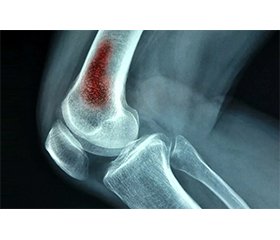Журнал «Травма» Том 24, №4, 2023
Вернуться к номеру
Екстракорпоральна ударно-хвильова терапія: можливості застосування при хронічному остеомієліті (огляд літератури)
Авторы: Герцен Г.І. (1), Ременюк Ю.К. (2), Сікорська М.В. (3), Білоножкін Г.Г. (1)
(1) - Національний університет охорони здоров’я України ім. П.Л. Шупика, м. Київ, Україна
(2) - Медичний центр «Аватаж», м. Київ, Україна
(3) - Медичний центр «Аватаж», м. Запоріжжя, Україна
Рубрики: Травматология и ортопедия
Разделы: Справочник специалиста
Версия для печати
Застосування екстракорпоральної ударно-хвильової терапії в експериментальних умовах показало ефективність методу при м’якотканинних і скелетних інфекціях. In vitro було встановлено, що енергозалежна дія ударних хвиль знижує життєздатність Staphylococus aureus та іншої патогенної флори. Для прояву антибактеріальної активності ударних хвиль щодо патогенних бактерій типової флори хронічного остеомієліту потрібно було не менше за 1000 імпульсів, а для майже повної її ерадикації (99 %) — 4000 імпульсів при щільності потоку енергії 0,59–0,96 мДж/мм2. Більшість авторів підтверджують ізольований (без антибіотиків) антибактеріальний ефект ударних хвиль in vitro, хоча є і протилежні думки. Відомо, що патогенні бактерії, включно із Staphylococus aureus, утворюють на інфікованих м’яких, кісткових тканинах, імплантах захисні біоплівки, унаслідок чого інфекція, що виникла, важко піддається лікуванню з низки причин — біоплівка перешкоджає проникненню антибіотиків, імунних клітин. У дослідженнях in vitro було встановлено, що ударні хвилі руйнують біоплівки патогенних бактерій і створюють умови для бактерицидної дії антибіотиків. У спостереженнях in vivo в умовах моделювання експериментального остеомієліту у тварин бактеріологічно було встановлено, що екстракорпоральна ударно-хвильова терапія при ізольованому застосуванні не має антибактеріального ефекту, проте при цьому морфологічно було встановлено менший ступінь вираженості остеомієліту. Автори констатували синергізм ударних хвиль з антибіотиками під час лікування хронічного остеомієліту у тварин, аж до бактерицидного ефекту. Дослідження впливу ударних хвиль на біоплівки патогенних бактерій, типових для інфекцій м’яких тканин, хронічного остеомієліту, як in vivo, так і in vitro показали, що після застосування методу патогенна флора стає сприйнятливою до антибіотикотерапії. Поширена в даний час думка про протипоказання щодо застосування екстракорпоральної ударно-хвильової терапії за наявності інфекції в організмі через небезпеку загострення запального процесу, можливість виникнення бактеріємії, сепсису, вогнищ вторинної інфекції не знайшла свого підтвердження в експериментальних дослідженнях in vivo. У багатьох роботах було показано відсутність у тварин цих та інших ускладнень після застосування ударних хвиль. Аналіз наведених даних свідчить про необхідність подальшого дослідження механізму дії екстракорпоральної ударно-хвильової терапії на хронічний остеомієліт, можливих ускладнень, пов’язаних із застосуванням методу, а також його апробації в клініці.
The use of extracorporeal shock wave therapy under experimental conditions has shown the effectiveness of the method in soft tissue and skeletal infections. In vitro, an energy-dependent effect of shock waves on reducing the viability of Staphylococcus aureus and other pathogenic flora was revealed. For the manifestation of the antibacterial activity of shock waves towards pathogenic bacteria of the typical flora in chronic osteomyelitis, at least 1,000 pulses were required, and for its almost complete eradication (99 %), 4,000 pulses were applied at an energy flux density of 0.59–0.96 mJ/mm2. Most authors confirm the isolated (without antibiotics) antibacterial effect of shock waves in vitro, although there are opposite opinions. It is known that pathogenic bacteria, including Staphylococcus aureus, form protective biofilms on infected soft, bone tissues, implants. Due to this, the emerging infection is difficult to treat for a number of reasons — the biofilm prevents the penetration of antibiotics and immune cells. In vitro studies have shown that shock waves destroy biofilms of pathogenic bacteria and create conditions for a joint bactericidal effect with antibiotics. In vivo observations under the conditions of modeling experimental osteomyelitis in animals have demonstrated bacteriologically that extracorporeal shock wave therapy, when used alone, does not have an antibacterial effect, however, a lower degree of osteomyelitis was detected morphologically. The authors stated the synergism of shock waves with antibiotics in the treatment of chronic osteomyelitis in animals, up to the bactericidal effect. Studies on the impact of shock waves on biofilms of pathogenic bacteria typical for soft tissue infections, chronic osteomyelitis, both in vivo and in vitro, showed that after the application of the method, the pathogenic flora becomes susceptible to antibiotic therapy. The currently widespread opinion about the contraindication of extracorporeal shock wave therapy in the presence of infection in the body, due to the risk of exacerbation of the inflammatory process, the likelihood of bacteremia, sepsis, and foci of secondary infection, has not been confirmed in the experimental studies in vivo. Many research have shown the absence of similar or other complications in animals after the use of shock waves. The analysis of the presented data indicates the need for further study of the mechanism of extracorporeal shock wave effect on chronic osteomyelitis, possible complications associated with the use of the method, as well as its approbation in the clinic.
огляд; екстракорпоральна ударно-хвильова терапія; хронічний остеомієліт
review; extracorporeal shock wave therapy; chronic osteomyelitis

